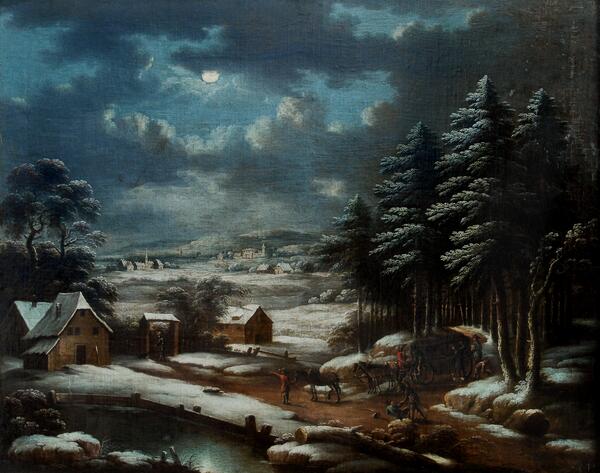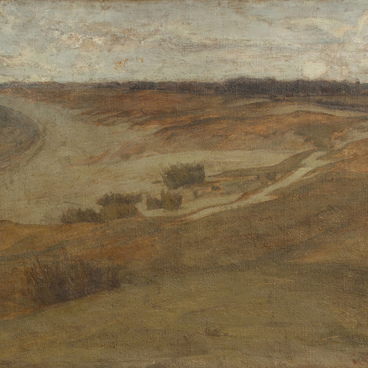Jan Wijnants (or Wynants) was a Dutch Golden Age painter and one of the founders of the German landscape school. He was born into the family of an art dealer in Haarlem around 1632. He was a stepbrother of the genre painter Egbert Jaspersz van Heemskerck. Around 1660, Jan Wijnants moved to Amsterdam where he continued painting and owned a guest house.
Unlike many of his contemporaries who painted from imagination or embellished the views of nature, Jan Wijnants pursued a more realistic style. His paintings demonstrate that the artist observed and studied the world around him on a daily basis. He was inspired by humble, everyday views of the areas around Haarlem. Such paintings became popular among art collectors somewhat later, in the 18th century.
Wijnants’ works influenced many famous painters, including the originator of the 18th-century British landscape school Thomas Gainsborough, the Dutch artists Anthonie van Borssom and Jacob van Ruisdael, the German painter Wilhelm von Kobell, and others. In his landscapes, nature is the main character. The human figures, or staffage, are of secondary importance and were often added by other artists. According to the traditions of that period, Jan Wijnants usually invited them to join him in working on his paintings, most likely, upon the requests of customers.
Many paintings by Jan Wijnants have been preserved to this day. They are displayed in some of the world’s largest museums, including the State Hermitage Museum, Museo de Huelva in Spain, the Museum of Fine Arts in Houston, the Rijksmuseum in Amsterdam, and others.
The Primorye Art Gallery houses “Winter Landscape” by an unknown artist who, most likely, was influenced by Jan Wijnants or copied his work. A snow-capped village on a riverbank lives its own life. Although only vast and quiet expanses can be seen, life is bustling in every house. There are only several human figures in the foreground of this painting, enlivening this quiet night landscape. Behind the houses in the foreground, a village can be seen in the back. The artist managed to create a feeling of depth and perspective in the painting.
Unlike many of his contemporaries who painted from imagination or embellished the views of nature, Jan Wijnants pursued a more realistic style. His paintings demonstrate that the artist observed and studied the world around him on a daily basis. He was inspired by humble, everyday views of the areas around Haarlem. Such paintings became popular among art collectors somewhat later, in the 18th century.
Wijnants’ works influenced many famous painters, including the originator of the 18th-century British landscape school Thomas Gainsborough, the Dutch artists Anthonie van Borssom and Jacob van Ruisdael, the German painter Wilhelm von Kobell, and others. In his landscapes, nature is the main character. The human figures, or staffage, are of secondary importance and were often added by other artists. According to the traditions of that period, Jan Wijnants usually invited them to join him in working on his paintings, most likely, upon the requests of customers.
Many paintings by Jan Wijnants have been preserved to this day. They are displayed in some of the world’s largest museums, including the State Hermitage Museum, Museo de Huelva in Spain, the Museum of Fine Arts in Houston, the Rijksmuseum in Amsterdam, and others.
The Primorye Art Gallery houses “Winter Landscape” by an unknown artist who, most likely, was influenced by Jan Wijnants or copied his work. A snow-capped village on a riverbank lives its own life. Although only vast and quiet expanses can be seen, life is bustling in every house. There are only several human figures in the foreground of this painting, enlivening this quiet night landscape. Behind the houses in the foreground, a village can be seen in the back. The artist managed to create a feeling of depth and perspective in the painting.




